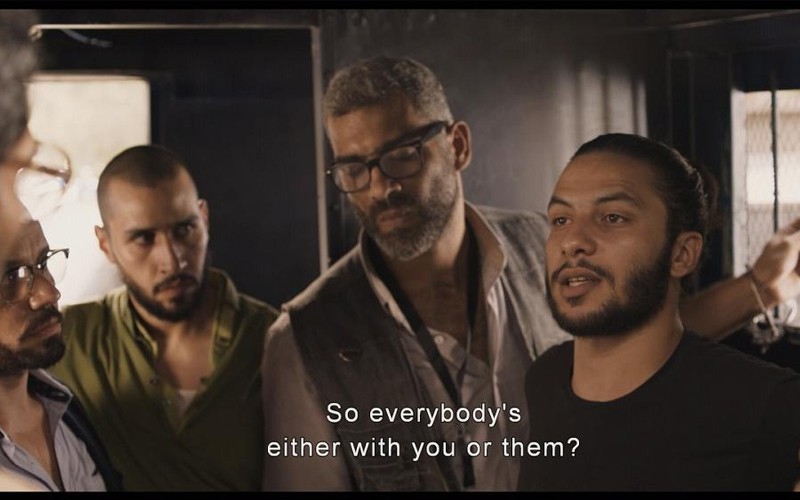Mohamed Diab’s bold and artistic one location film Eshtebak had people debating whether they were with or against it before it was even featured. Set entirely in a police van during clashes between Military supporters and Muslim Brotherhood supporters, the film makes sure it does not take sides. It’s refreshing to finally see a work of art that reminds us that we are still human.
In fact, the debates about the film aren’t the only thing that got people curious about it, but also its unique elements. From the almost perfect casting job and the difficult one location filming, to the amazing poster by Ahmed Emad, it was all perfect.
“after watching the film, we’ve come to the conclusion that we are all in the same van together.”
Nominated to Cannes Film Festival’s Un-Certain Regard Award and screened in Munich Film Festival, with international stars Tom Hanks and Daniel Craig expressing their appreciation of the film, Esthebak has already made us very proud. Not only that, but after watching the film, we’ve come to the conclusion that we are all in the same van together. Here are 5 human elements that touched us in Eshtebak.
How it Reminded us that we can’t Always be Right
In Eshtebak we are facing a film in which each sentence, scene and music track makes you think and ask yourself a lot of questions, “are my views always right? And if they are right, are they worth forgetting my humanity for?”
“Eshtebak succeeds at making the viewer forget which side they’re on, and letting them be human.”
How it Showed us that Egyptians from All Walks of Life will Share the Same Fate
The film starts and ends in a police van; within its confines, we find all types of Egyptians of all ages with different backgrounds. When they face the difficult situation they’re in, they forget about all their backgrounds and political differences. All that concerns them is how to help themselves and each other. The film gives you an extremely realistic experience as if you’re one of them. In the same time, you can pause and start analyzing the world around you. Eshtebak succeeds at making the viewer forget which side they’re on, and letting them be human.
How it Demonstrated Vulnerability in the Most Unlikely Way
We saw hysteria in the scene where character Mans, played by Ahmed Malek, broke down when everyone around him started fighting and sat in a corner, hugging his knees and listening to a shaabi song, because it made him feel home, as if nothing happened.
How it Made us Sympathize with People from All Walks of Life
Our hearts ached for the young girl, when she wanted to go to the bathroom and police officers were not letting her out. And we were deeply moved when they asked the valet boy why he was protesting against the Muslim Brotherhood and he said that his dog died in one of their protests before.
“We saw hysteria in the scene where character Mans, played by Ahmed Malek, broke down when everyone around him started fighting and sat in a corner, hugging his knees and listening to a shaabi song”
How it Showed us What Hatred can do to Us All
The film perfectly portrays the hatred we lived and are still living, and how it’s not taking us anywhere. The film’s makers didn’t make the film to accuse the police or the Muslim Brotherhood, but rather made it to be the voice in your head, shaking you back into reality and reminding you that you’re not the only one who’s right.
There is no way out, except by having tolerance for each other, and accepting all our differences. Otherwise, we will all lose our game of tic-tac-toe.

